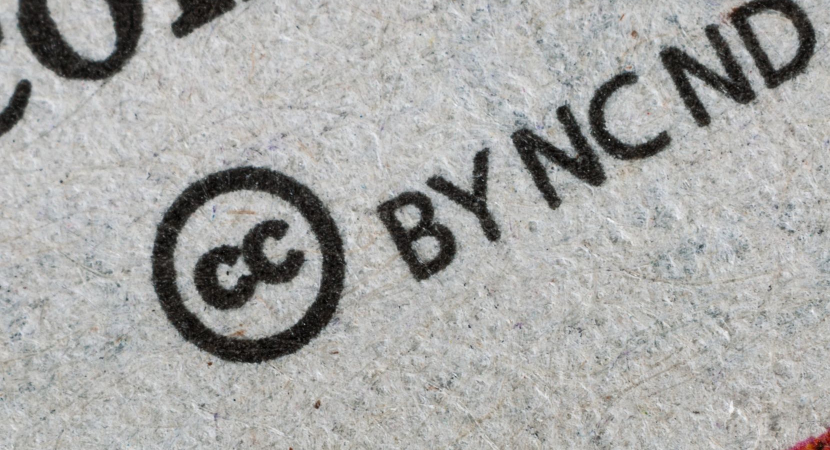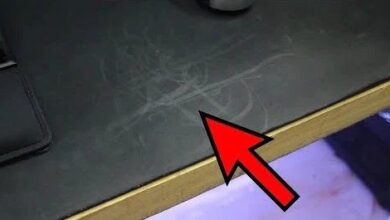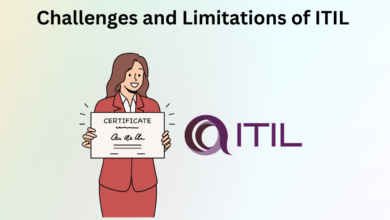What Is Copyright Infringement And The Steps You Can Take To Avoid It

In today’s fast-developing world, there is an outpouring of data and original work through the internet. Hence, there is a requirement for being authentic and avoiding copyright infringement. Copyrights provide validation or originality to the user, and any violation like sampling or plagiarism can lead to copyright infringement. This is especially common in literature, research, music, movies, art, content creation on social media platforms like YouTube, Instagram, etc.
People and organizations who foster new works and register for copyright insurance do as such to guarantee that they can benefit from their endeavors. Different gatherings might be granted authorization to utilize those works by permitting game plans or buying the copyright holder’s pieces. Notwithstanding, a few elements might lead various communities to take part in copyright encroachment. Reasons incorporate an exorbitant cost for the approved work or an absence of admittance to a stock of the approved work. People and organizations who foster new works register for copyright assurance to guarantee to benefit from their endeavors.
Different gatherings might consent to utilize those works through permitting plans or purchase the pieces from the copyright holder.
What is Copyright Infringement?
Copyright Infringement alludes to the unapproved utilization of somebody’s protected work. Subsequently, it is the utilization of somebody’s protected work without consent along these lines encroaching certain privileges of the copyright holder, option to replicate, convey, show or play out the secured work. Copyright is legitimate security for unique works like composition, music, photography, written work, etc. If somebody abuses these rights, you can record a claim against them or utilize a new, simpler interaction. Just the proprietor of the copyright can duplicate the result, sell it, or openly show it.
Copyright infringement is addressed as the violation of a person or group’s right to intellectual property in any specific domain. Copyright Infringement can lead to business losses and legal implications. It must be analyzed and avoided under any major circumstances. See this article on CrunchyTricks that explains how you can insert and type Copyright, Trademark, and Registered Symbols in Photoshop. You can use these symbols without any hassle now.
Copyright encroachment (also known as copyright infringement) demonstrates disregarding any copyright proprietor’s selective rights allowed by the government Copyright Act.
Three components should be set up all together for the encroachment to happen.
- The copyright holder should have legitimate copyright.
- The individual who is supposedly encroaching should approach the protected work.
- The duplication of the secure work should be outside the special cases.
Copyright Infringement Issues:
Copyright infringement issues have shifted throughout the long term. However, with fast advances in innovation, the Copyright Office has confronted many problems with an end goal to stay up with development.
-
Innovation
Present-day innovation makes it generally simple to duplicate an item or data. A few organizations infer a significant piece of their income from repeating what different organizations have made. Accordingly, the Copyright Office set up the Copyright Modernization Office in 2018. The division is liable for planning IT (web innovation) modernization projects determined to modernize the Copyright Office just as the Library of Congress.
-
Worldwide Issues
Copyright Infringement and the subsequent laws encompassing security can fluctuate from one country to another, with various choices for a plan of action and various assurance measures. In a worldwide setting, it may very well be hard to demonstrate copyright proprietorship, and homegrown courts might see the requirement of copyright claims from global organizations as a danger to public efficiency. Like the European Association, some international associations endeavor to keep their nations’ guidelines and implementation rules as orchestrated as expected.
-
Photography and Visual Resources
With the advances in computerized symbolism, it’s become simpler than any time in recent memory to duplicate a picture. The Copyright Office has been made mindful of different copyright issues from photographic artists, artists, and visual specialists in recent years.
-
Non-monetary Rights
Not all copyright infringement brings about a quantifiable money-related misfortune as such. Moral rights are also upheld, which cover a creator’s more right than wrong to be recognized as the creator of a work–called the right of attribution. Likewise, creators hope to forestall changes or mutilations of their work–called the right of trustworthiness.
-
The Internet
The developing significance of the internet has made new obstructions for copyright holders. It is simpler than any time in recent memory for protected materials to be gotten to by organizations throughout the planet. The production of new advancements has dominated the administrative climate’s capacity to guarantee that copyrights apply to new configurations.
Copyright Infringement Laws
The United States Copyright Office characterizes copyright encroachment all things considered: “As an overall matter, copyright encroachment happens when a protected work is imitated, appropriated, performed, freely shown, or made into a subsidiary work without the consent of the copyright proprietor.”
Copyright encroachment and infringement questions are normally settled through direct arrangement, a notification and bring down interaction, or suit in common court. Horrifying or enormous scope business encroachment, particularly when duplicating, is in some cases arranged to utilize the criminal equity framework. Moving public assumptions propels in advanced innovation, and the expanding reach of the web has prompted such far and wide, mysterious encroachment that copyright-subordinate enterprises presently center less around seeking after people who look for and share copyright-secured content online. They concentrate more on extending intellectual property law to perceive and punish, as backhanded infringers, the specialist organizations, and programming merchants who are said to work with and energize individual demonstrations of encroachment by others.
The Copyright Office doesn’t prosecute the people who disregard intellectual property law; however, all things considered, it helps the U.S. Division of Equity (DOJ) on the legal disputes and the essential legitimate documentation.
One of the most famous regulations against copyright infringement is the Berne Convention, which protects the rights of artistic works like literature, art, music, etc. The penalties for copyright infringement can be legal fines, damages, jail terms, restrictions in business or working, etc. The penalties may vary according to the severity of copyright infringement and the country where the work is valid under the law.
Users and businesses must always obtain what intellectual property laws secure. Intellectual property laws are frequently mistaken for brand names, licenses, and licenses. Although these are large types of IP, copyrights may be the most effortless to acquire and disregard—either purposefully or unexpectedly. Finding out about the U.S. Copyright Demonstration of 1970 and the Berne Show guidelines is a decent beginning.
How to Avoid Copyright Infringement?
While in no way, shape, or form an elite rundown, these ideas will assist you with trying not to privateer another person’s inventive works accidentally:
To avoid copyright infringement, one can use various methods to ensure that one is on the right side of the law.
- Always be aware of copyright laws in the country you are operating in. Checking and complying with the Intellectual Property laws of the country you are using is extremely important for any individual or business. Keep a strong eye out for details like the copyright logo on work which usually indicates that work could lead to copyright infringement.
- Be careful even if results do not carry the copyright logo, as it might still cause legal issues for you. One must also be aware of various conventions adopted globally or by countries like the Berne Convention.
- Having a legal team for large organizations is an absolute necessity to ensure that every product or service being offered by your company is legally valid under the law and does not counterfeit original work or infringe the rights of others around you. For individuals, having a legal attorney or advisor who can help them navigate their way through the legalities involved is beneficial.
- Large organizations must ensure that they have policies in place to prevent copyright infringement on products and services. This helps minimize the impact on businesses and artistic pieces. Having an Intellectual Property policy is extremely important for any organization. Always ensure periodic reviews of licensing agreements and subscriptions that could lead to legal issues if expiring. Keep proper records of the same for reference in case of legal procedures or challenges.
- Ensure that copyrighted pieces are obtained for use with permission or subscription from the original owner, else it can lead to copyright infringement and legalities. One can also check if a specific work like music or art is under copyright protection for personal or professional services. Ensure that they use samples from public domains like Creative Commons, Getty Images, etc., where one can find several copyright-free pieces of work for public use. But proceed with caution, as the copyright owner can enforce legal rights once such public domains’ licensing or subscription term expires.
- One must also be aware of laws regarding the public domain under their jurisdiction or region. Creativity is a necessary skill to avoid any copyright issue. Hire the right people for your company or personal needs, which can develop new, creative ideas or works that could prevent you from being accused of copyright infringement for using work from the internet.
- One can also use plagiarism testing software or websites like Grammarly, Plagiarism Checker X, Copyscape, etc., to ensure their work is not infringing the intellectual property rights of some other public work on the internet.
- For students and researchers, copyright and intellectual property rights form an important part of the research domain. Students and educational institutions must ensure that their proposed research work does not infringe the copyrights of already existing research work as it could negatively impact the career of the student and the reputation of the educational institution.
- The best way to avoid copyright infringement issues in the research domain is to use plagiarism checkers that cater to research purposes like Turnitin, MOSS (Measure of Software Similarity), ProWritingAid, etc. Students and researchers must also adhere to copyright and intellectual property rules and regulations followed by major research journals like Springer, Scopus indexed journals, etc. One must always cite the papers they refer to in their research and credit the original authors of the documents in the appropriate format.
- In case it’s not your unique work, don’t utilize it. We as a whole are likely acquainted with the idiom, “In case it’s not yours, don’t contact it.” Intellectual property laws cling to a similar way of thinking: the brilliant principle is to acquire the express consent from the proprietor, maker, or holder of the protected material. Except if you’re the maker of the work, you’re not permitted to utilize it. This is valid in any event when there is no copyright image related to a job.
- What you find on the web is, by and large, not a fair game. As a rule, anything you see or read on the web is protected, naturally, considering that the material (web journals, scholarly or imaginative works, and so on) was made by another person. On the off chance that you duplicate, imitate, show, or in any case hold out another’s work (like a picture, musical recording, article, or some other kind of work that you didn’t make) as your own, you are without a doubt encroaching on protected material. This is valid if you benefited monetarily from the utilization.
Punishment for Copyright Infringement
The lawful punishments for copyright encroachment are:
- Infringer pays the real dollar measure of harms and benefits.
- The law gives a reach from $200 to $150,000 for each work infringed.
- Infringer pays for all lawyer’s charges and court costs.
- The court can provide an order to stop the encroaching demonstrations.
- The court can appropriate the unlawful works.
- The Infringer can go to prison.
To avoid being troubled by copyright infringement, one must always keep their work like research papers, music, literature, art, etc., private and under wraps until all the legal and intellectual property rights are approved. Only then should the work be released to the public world.
The internet can be a dangerous and unending space, but if navigated carefully and creatively, one can make a huge difference and impact people’s lives. Originality and creativity are widely appreciated in the current conditions, and ensuring your work adheres to laws and regulations can help you avoid copyright infringement. Confidentiality helps ensure that ideas are not stolen before statutes and rules are enforced, protecting creative work in the public domain.



